The heyday of country-house building and collecting in Ireland was the 18th century, when grandees of the time embellished their properties. One such example, James FitzGerald, 1st Duke of Leinster, adorned his Palladian mansion at Carton in Kildare and his grand townhouse – now Leinster House, home of Dáil Éireann – with magnificent portraits and landscapes by artists including Hans Holbein, Aelbert Cuyp, Peter Paul Rubens, Joshua Reynolds, Allan Ramsay, Arthur Devis, Thomas Roberts and William Ashford.
He commissioned a grandiose silver dinner service, with the mark of the London royal goldsmith, George Wickes, made in 1745–6, which contained 5,295 ounces of silver, cost £4,000 (€4,735), and comprised 150 pieces. It remains today the grandest and most complete surviving aristocratic service, valued at around £2 million (€2.37m).
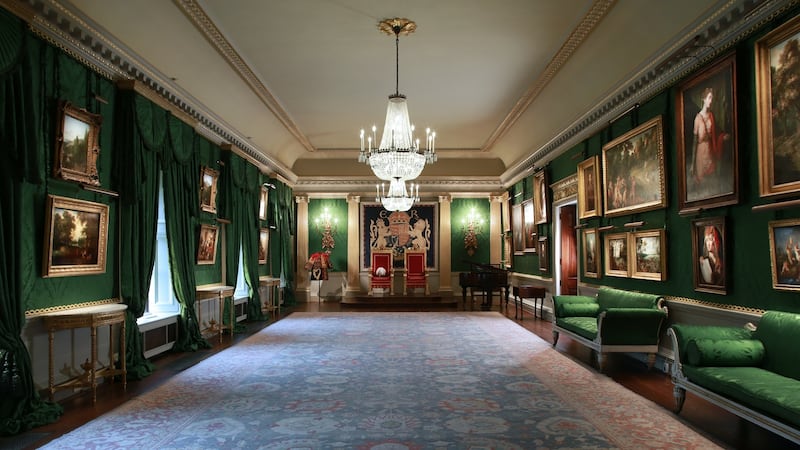
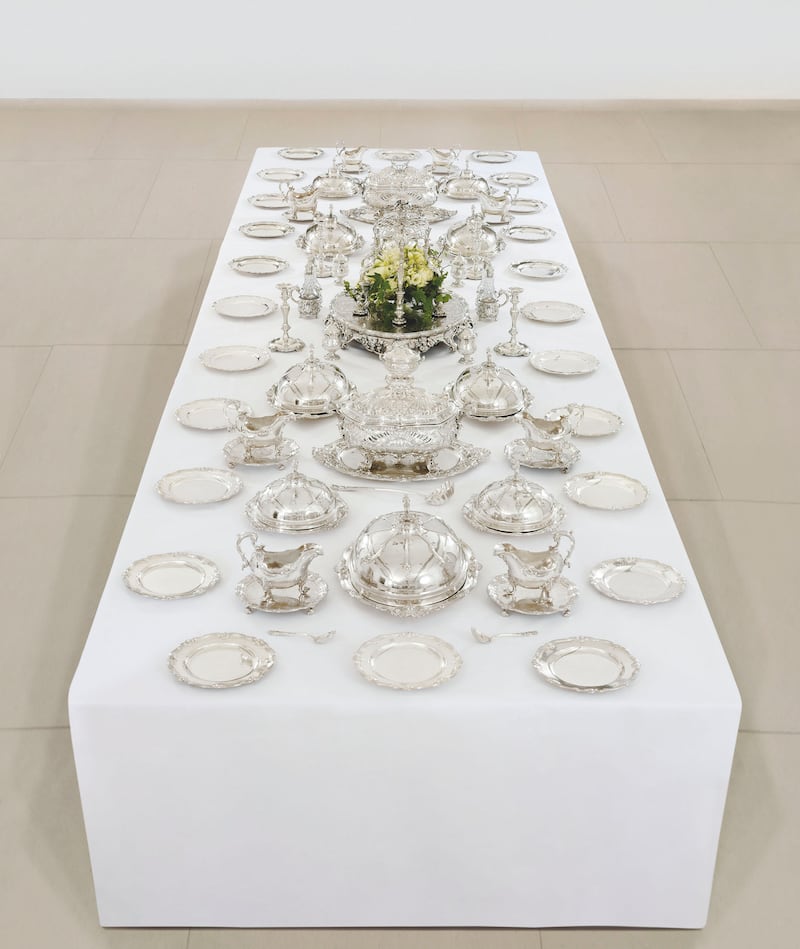
A new book of essays, Country House Collections: Their Lives and Afterlives, explores how collections were amassed in country houses throughout Ireland, Britain and further afield and how they were dispersed. It also offers insight into the reasons for their dispersals, whether elective or enforced. It explores the intriguing question of whether the identity of a house changes if its contents have been removed; and how objects are viewed and understood in new locations such as museums and art galleries by different audiences.
For every piece we spy on a wall or in a room setting there lies a story of mobility, mixed fortunes and journeys, often across continents, in the hands of different owners.
From the 1880s, dispersal sales became the order of the day (across the United Kingdom as well as Ireland). Auctions from aristocratic mansions such as Carton, Co Kildare (several between the 1920s and 1940s), Ballyfin, Co Laois (1923), Malahide Castle, Co Dublin (1976), Adare Manor, Co Limerick (1982), Lissadell, Co Sligo (2003) and, most recently, Killadoon, Co Kildare (2020) scattered these houses' contents to the winds. The five-day sale at Charleville Forest, Co Offaly (1948) witnessed the sale of five views of the demesne by William Ashford for £18 (€21); in 1991, two of the set reappeared at auction fetching over £100,000 each (€118,385).
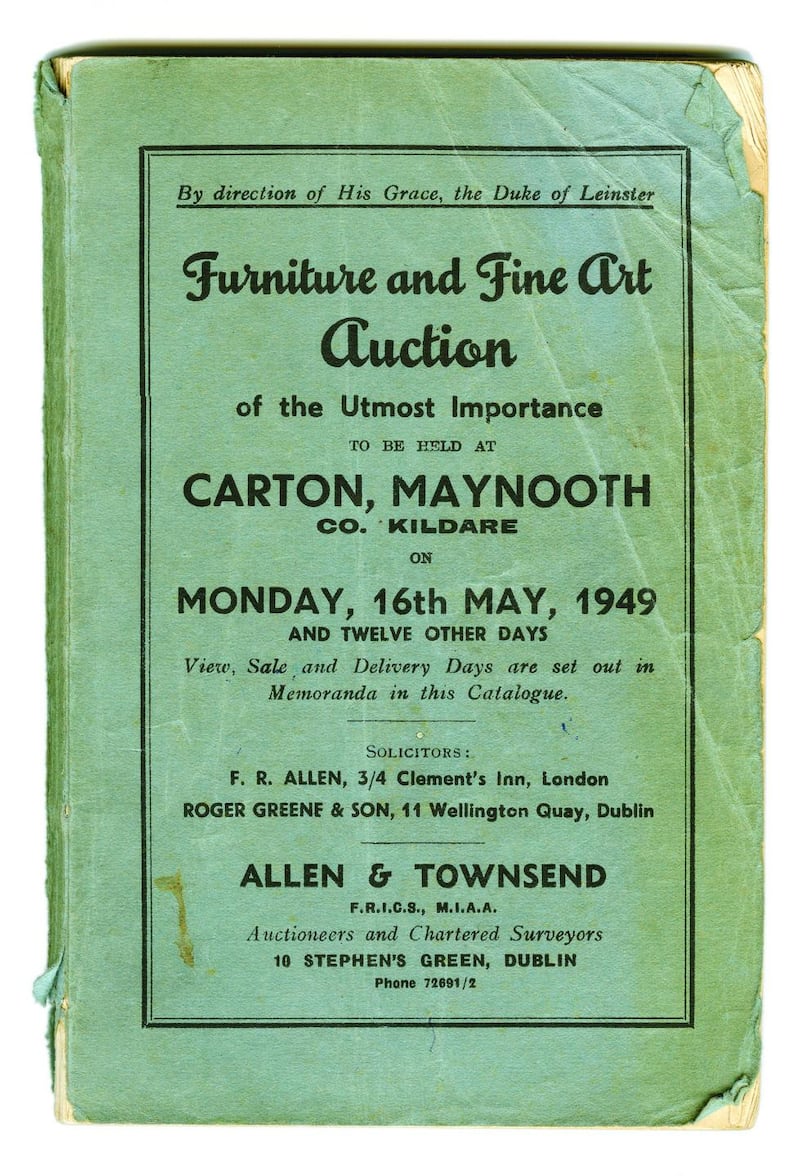
But dispersal is not the full story: for every breakup there are the actions of notable philanthropists and collectors. At Russborough House, Co Wicklow, Sir Alfred and Lady Beit acquired an astonishing group of masterpieces, as well as Renaissance bronzes. From the 1960s, Desmond Guinness built a fine collection of mostly Irish paintings and furniture at Leixlip Castle, Co Kildare; as did Desmond FitzGerald, Knight of Glin, at Glin Castle, Co Limerick. In 2009, when a selection of items was sold from the Knight’s collection almost all were the fruits of his own collecting, rather than being inherited pieces. Many of these objects found their way into other Irish houses, thereby acquiring fresh layers of history.
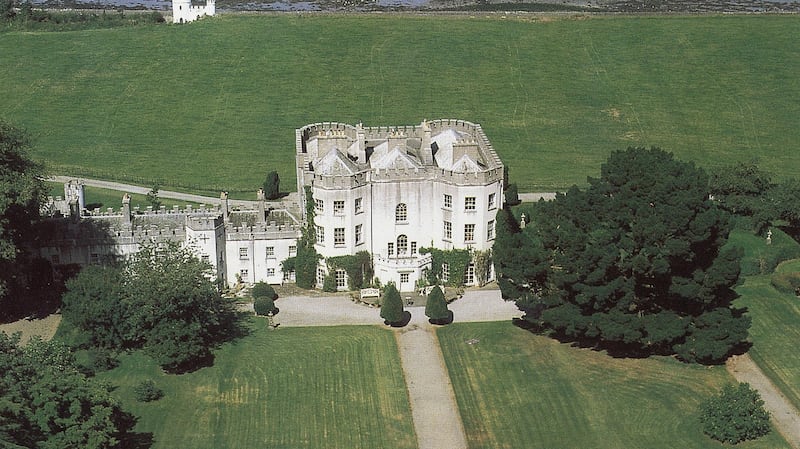
The early 21st century also saw the regeneration of houses and collections at Abbey Leix (Sir David Davies); Ballyfin and Churchill (Fred and Kay Krehbiel); Kilboy (Mr and Mrs Shane Ryan), and Lyons (Dr Tony Ryan). Years of flight began, and have continued, to give way to instances of repatriation.
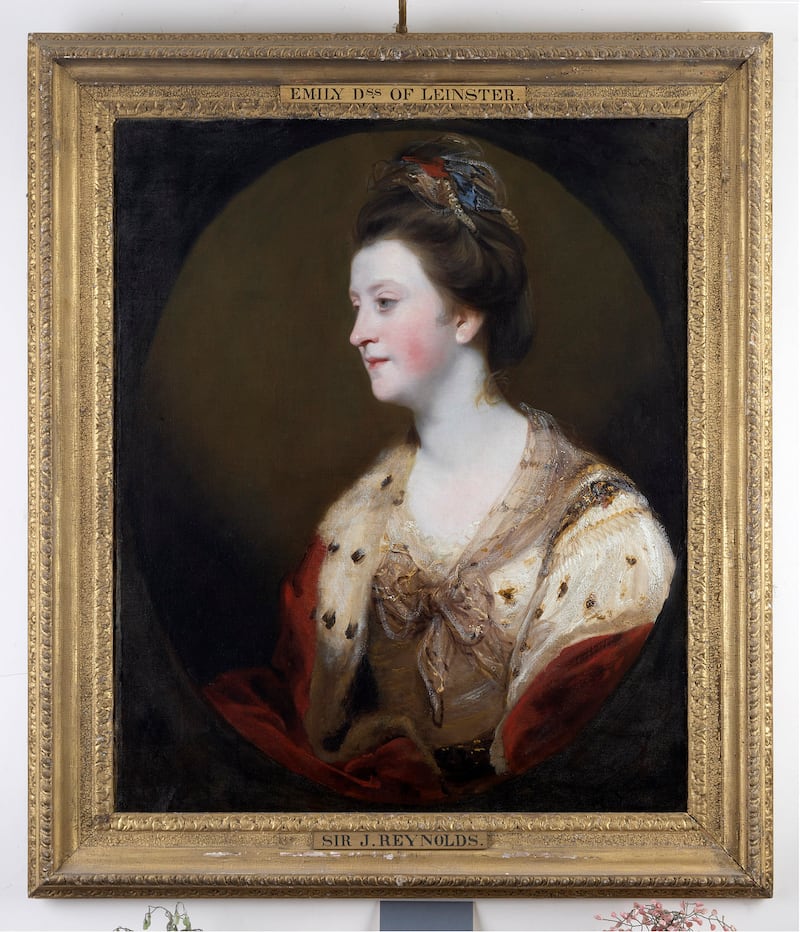
To take one current example, the splendid portrait of Emily, 1st Duchess of Leinster, by Sir Joshua Reynolds, that once hung at her home at Carton, see-sawed back and forth, was sold, re-acquired, and let go again until it was recently purchased by the Office of Public Works and the Castletown Foundation (with support from The Friends of the National Collections of Ireland) and unveiled at Castletown, Co Kildare, the former home of her sister Louisa.
At Ballyfin, John Hoppner’s portrait of Sir Charles Coote (the builder of the house) was sold in the early 20th century and spent many years in the Museum of Fine Arts in Richmond, Virginia; but fortunes have changed for both painting and Ballyfin, and the portrait has been reunited with the house.
When we look at collections how much thought do we spare for the chequered lives of these works – a portrait, a piece of sculpture, a fine example of porcelain, or a book even? Objects in one sense are defined by their owners, especially if they have been commissioned from artists and craftsmen by a particular patron. But for every piece we spy on a wall or in a room setting there lies a story of mobility, mixed fortunes and journeys, often across continents, in the hands of different owners.
For auctioneers, uncovering these narratives means stepping into the hallowed territory of provenance, tracing the pedigree of a work, knowing full well that particular moments or signatures of ownership can influence value in a very real way. The biographies of many individual artworks confirm this grand pattern, and for all their time spent hanging on walls, standing on pedestals, displayed behind vitrines or in bookcases, collections are not quite as stable or permanent as they might at first suggest. What one sees may simply be a momentary manifestation in a long cycle of circulation and exchange.
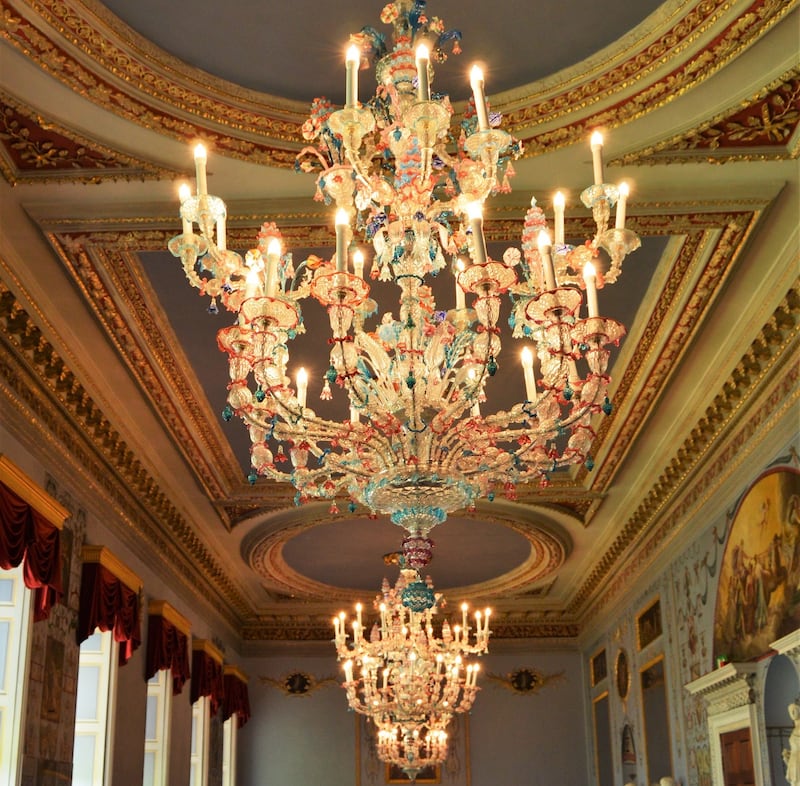
Since the middle of the 20th century growing numbers of houses have been open to the public as part of the heritage and tourism industry. Visitors from all sorts of backgrounds, not necessarily collectors, connoisseurs, or art historians, now visit these properties; invariably the collections on display signify different things to different people. Rooms in country houses may be crammed with dozens of objects, or more sparsely furnished but whichever, display and interpretation are key to aiding comprehension. Russborough, Newbridge, and Mount Stewart, to name but a few, continue to display their collections for the public to enjoy and understand.
Viewing art on the walls of a house or of a gallery requires a bifocal approach: the object itself, a masterpiece of craft, beauty, pathos or whatever, but also its trajectory of ownership through time
Like the portrait of Emily Fitzgerald, countless objects have long since left their original homes and transferred to the public realm in terms of ownership and location. This has been the story with the Guinness collection at Farmleigh House in Phoenix Park, which has now become a State guest house for use by Government, as well as a historic house museum open to the public under the auspices of the OPW. This dual existence is reflected in the way in which the house is filled with items from the Guinness collection, as well as from the Government collections. The building has a private and a public set of stories to tell through the objects on display, which range from Edward Guinness's Victorian and Edwardian taste to examples of 20th-century Irish art.
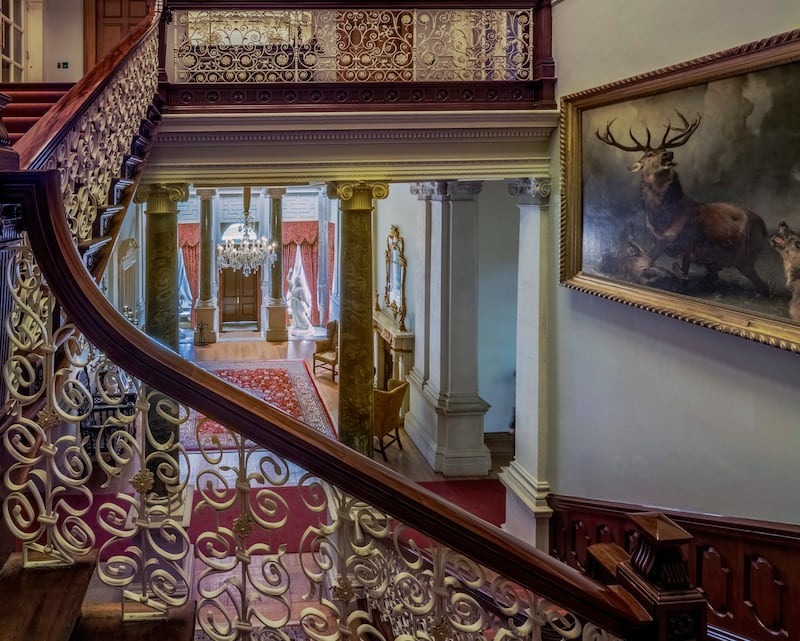
In addition to splendid initiatives by the OPW at Castletown, Doneraile and Emo Court, the Irish Heritage Trust has acquired a fine collection of early Irish painting, put together in the 1980s by Richard Wood, for display at Fota House, under the provisions of Section 1003A of the 2006 Finance Act, and through the generosity of Thomas McCarthy and his family. The pictures include works by Hugh Douglas Hamilton, Robert Carver, and James Latham.
Inevitably then, museums and galleries sit within the spectrum of collecting, and a particular highpoint in recent years has been the 2015 exhibition held in Chicago – Ireland, Crossroads of Art and Design – which provoked mixed reactions at the loss of so many objects, as well as a recognition that many of these were indeed more accessible and easier to appreciate in their new settings. So viewing art on the walls of a house or of a gallery requires a bifocal approach: the object itself, a masterpiece of craft, beauty, pathos or whatever, but also its trajectory of ownership through time. Each of these items has more than one story to tell.
Country House Collections: Their Lives and Afterlives, edited by Terence Dooley and Christopher Ridgway, is published by Four Courts Press, €50




















